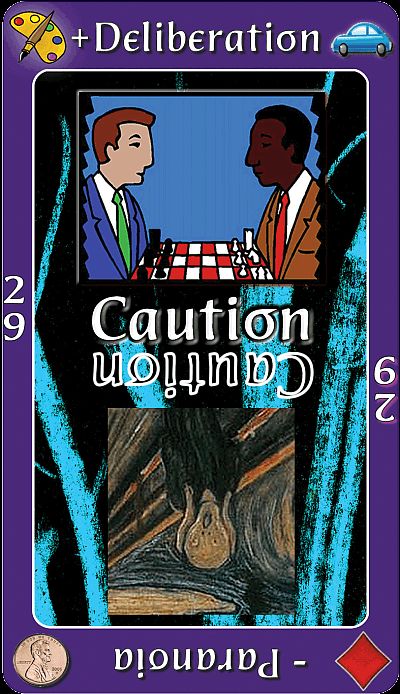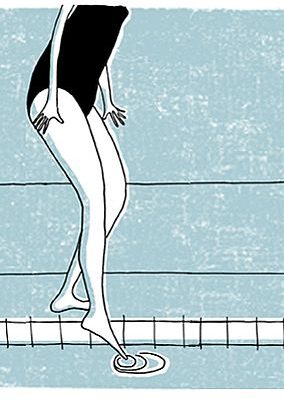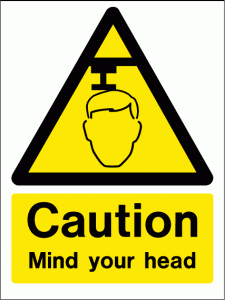29 Caution

“Warning, warning, Will Robinson!”
Character of Robot in TV’s Lost In Space

Symbols & Color
- Artist’s palette: Artisan Set – Background Image and Border Color
- Automobile: Mode Group
- Penny: Ordinal Orientation – Personal and intimate
- Diamond: Expressive Axis
- Color: Violet – Artisan Set
Implications of the Upright Position or Positive Pole
Seldom are things black or white, even when the chess pieces are simple to discern who you are and who your opponent is. Yet how they will move is varied and complex. Deliberation of one’s own moves often infers, if not outright requires, how the person you interact with will respond in kind. Since calculation is such an integral part of the game of chess, most every player I’ve ever met has been a bit cautious about losing his castle, his horse, or his queen; and of course, a queen her king. But as long as the game goes on, the inevitable gets closer: checkmate. Sometimes, you might as well go for it. Caution Mode is a way of acting that holds the injunction: “act only when certain”. Like its cousin in the Ordinal Expressive column, Discrimination, it views alternatives with an eye on the safest bet. You can be sure that the Caution Mode person is very thoughtful (Card 36) even when the thinking is looking for things to go wrong or pitfalls in someone else’s logic. The sure thing mindset will lead some in Caution Mode to be
very habit-driven and repetitive. Change comes only when something has “stood the test of time” and has “proven itself ” reliable. A familiar word or thought so pervasive to Caution is beware. Therefore, Caution Mode relies upon planning, calculation, and process monitoring. And as you might expect, these folks, like the Skeptic aspect in its constellation, ask questions trying to make themselves safe and certain about the other person or circumstance.
Card messages in the Illuminated position.
+ Deliberation
(circumspect, thorough, prudent, careful, shrewd, calculating, tactful, methodical)
- Deliberation can be quick or ponderous. Either way this card says, “do not make decisions lightly”.
- Have you considered all the factors in a situation? Act like a hunter stalking prey. If you are circumspect, and deliberate your options carefully, you increase your chances for success. Key phrase: Slow and steady wins.
- Taking things slowly and with deliberate baby steps insures that you learn to walk well.
- If you are circumspect, and deliberate your options carefully, you increase your chances for success. Key phrase: Slow and steady wins!
- Tact is the root word for tactic. Weigh both when considering your response in this situation.
- Due diligence, if performed thoroughly, will eliminate most problems you could encounter…in advance!
- Forecast and then plan accordingly, is prudent here.
- You are seeking wise counsel, not conventional wisdom. Cautionary tales are full of platitudes, but do the facts of your situation match up with the warnings? Still think for yourself.
- If someone is trying to rush you, tell them, “there is a method to my madness.” If they persist, simply get mad.
- The shrewd business man will ride on the thrust of his competitor before igniting his own rockets. Being judicious is the best way not to burn out.
- You’ve paid attention to the details. Low and behold you flushed out a devil! Good work.
- Planning does not always stop things from happening, but when you encounter them you are often prepared to deal with exigencies when they arise! Just be aware of what kind of things could happen and you’ll experience more success and confidence.
- When in this energy, it is really useful to employ probability to make decisions. But it is also prudent to make sure that the statistics pencil out and the mathematician is an honest broker. Some people just make stuff up and sound credible.
- Remember the old aphorism, “an ounce of prevention is worth a pound of cure.” Being prudent means you’ll regain health faster and not suffer as long.
Quotations expressing this Pole
- “An ounce of prevention is worth a pound of cure.” Popular aphorism
- “Be slow of tongue and quick of eye.” – Miguel De Cervantes
- “Don’t throw away the old bucket until you know whether the new one holds water.” – Swedish Proverb
Implications of the Reversed Position or Negative Pole
Edvard Munch’ surrealist image, The Scream (of Nature) conveys more than a visceral sense of paranoid terror, shock or dismay. Yet, even though considered a mark of insanity, paranoia, like the stopped clock that is right twice a day, is sometimes well placed. When we feel ourselves completely in moments of continuous fear, we become alone, alienated, and phobic of anything we associate with the cause of these feelings. Essences which have been hurt or disappointment by more active Overleaves like: Passion, Aggression, Idealism, Growth, Moving or Emotional Centers; will choose this Mode as a suitable means to apply the brakes and slow down their reactiveness. But in a life which needs to avoid or may anticipate tragedy or pain, it is not uncommon for Essences is checkmated by Ego and sends a Caution mode person spiraling into indecision, and in the extreme paranoia. Most phobias evoke extreme cautious reactions like the “freeze” response of geckos and lizards or like a deer caught in the headlights of an oncoming car. Not acting until it is too late is often worse in repercussions than having taken a risk in the first place. Cowardice is the interpretation that inaction is based upon excessive fear and thus may be an outgrowth of the negative pole of this Mode.
Card messages in the Shadow position.
– Paranoia
(phobia, trepidation, retreating, timid, superstitious, aversion, anxious, worried, jumpy, indecisive, hesitant, dread, officious, slothful)
- Paranoia makes people freeze or act erratically. Defensive and reactive, this shadow side might be a cunning and conniving foe instead of a trembling fool. What polarizes you to become afraid of fear itself? Your phobias might be winning?
- Risk averse? Now is not the time to wait n’ see. Make a decision.
- If you “err to the side of caution” and come out wrong, did you learn anything from your error? The only thing to fear is failing to learn from mistakes.
- FDR said, “you have nothing to fear but fear itself.” It makes people act squirrely and weird. Still, step lightly, just the same.
- Being drastic isn’t often a strategy, it is a reaction. The world could be crashing down around you and you might forget that there is a time and place for everything.
- In this position, the card is telling you: be ultra careful! There might be a boogie man in the shadows. Freeze and let it come into the light. Then, heave a sigh of relief or run like hell. You’ll know the difference.
- Nothing wrong with a little healthy paranoia. Even broken clock is right twice a day.
- Something is polarizing your fear in this situation and making you afraid. Your phobias have jumped into your mind. Are they winning?
- Too many precautions are stumbling blocks to any forward progress. Take care but take action.
Familiar Quotations expressing this Mode
- “All good thing comes to he who waits.” Author unknown
- “The chief danger in life is that you may take too many precautions.” Alfred Adler
- “There is a courageous wisdom; there is also a false, reptile prudence, the result not of caution but of fear.” Edmund Burke
- “Paranoia strikes deep, into your heart it will creep. It starts when you are always afraid. Step out-of-line, the man comes and takes you away.” Song – For What It’s Worth by Stephen Stills
Relevance in the Michael Teaching

Caution Mode is a way of acting that holds the injunction: “act only when certain”. Like its cousin in the Ordinal Expressive column: Discrimination; it views alternatives with an eye on the safest bet. You can be sure that the Caution Mode person is very thoughtful even when the thinking is looking for things to go wrong or pitfalls in someone else’s logic. The sure thing mindset will lead some in Caution mode to be very habit driven and repetitive. Change comes only when something has “stood the test of time” and has “proven itself” reliable. A familiar word or thought so pervasive to Caution is beware. Therefore, Caution Mode relies upon planning, calculation, and process monitoring. And as you might expect, these are folks, like the Skeptic aspect in its constellation, asks questions trying to make themselves safe and certain about the other person or circumstance.
Essences which have been hurt or disappointment by more active Overleaves like: Passion, Aggression, Idealism, Growth, Moving or Emotional Centers; will choose this Mode as a means to apply the brakes, and slow down their reactiveness when suitable. But when life has been filled with tragedy or pain, it is not uncommon for Ego to send a Caution mode person spiraling into indecision and in the extreme paranoia. Most phobias evoke extreme cautious reactions like the “freeze” response of geckos and lizards or like a deer caught in the headlights of an oncoming car. Not acting until it is too late is often worse in repercussions than having taken a risk in the first place. Cowardice is the interpretation that inaction is based upon excessive fear and thus may be an outgrowth of the negative pole of this Mode.
President George Bush Sr. who is in Caution Mode, was parodied by comedian Dana Carvey who in character would say, “wouldn’t be prudent!” A perfect statement of Caution. As the graphic above suggests, the fear within Caution Mode is intellectualized and they can get caught in excessive thinking or evaluating “what if” scenarios. Most of the fears come from the worst case scenario imagination. Shifting to Power Mode helps that person take authority and make a decision (to cut) other options and implement one.
Cultural Meaning
Financial Capitalism is a conundrum and a contradiction. On the one hand, investors are very cautious when looking for the next, great, sure thing. Yet as the 2008 Wall Street debacle has revealed, we see that venture capitalist are willing to do things that are inherently destabilizing in the name of profit. It brings us to the question: “whose version of caution are we to consider?” Business, as a sector of society, will figuratively pat itself hardily on the back speaking with unbridled pride about the reliance upon standards like efficiency, productivity, and other sound market fundamentals which guide their decisions. Yet when Wall Street is spooked, it runs for the safety of tried and true investments like gold and silver.
In a society dominated by consumption gets a duplicitous narrative about Caution. Caveat Emptor, let the buyer beware, pays lip service to caution. But in the media, easy credit throws caution to the wind with a rallying cry of “charge it!” And of course, the imprudence of the consumer failing to deliberate the asserted view that economic growth will keep house prices and employment and ever growing, paid the price of their folly with foreclosures and bankruptcies.
Politically, Caution can be a stall tactic to grind progress to a halt. Invoking the phrase “this issue needs more study”, many a situation has worsened to the extreme. Examples in the 20th century include: the Great Depression, isolationism before WWII, and climate change, to name but a few examples where a diversion in the name of deliberation, was employed which allowed countervailing forces to congeal and lead to disastrous consequences. Almost all of which could have been prevented or mitigated with proper action.
But there is danger in the backlash to over caution as well. Upon the failure of caution to produce a result, often the mood swings diametrically opposite of what was happening and overpowers all other considerations ram-roding or imposing a solution onto a situation throwing all caution to the wind. A balance between careful deliberation and the power to render a decision rests with the institutions called the courts.
So make your inner judge and verdicts you render a balance between the careful deliberation of positive Caution and balance it with the personal exercise of authoritative justice. A poem which typifies the challenge to act even when in caution was written by Pastor Martin Niemöller, perhaps you have read it.
First they came for the communists, and I didn’t speak out because I wasn’t a communist.
Then they came for the trade unionists, and I didn’t speak out because I wasn’t a trade unionist.
Then they came for the Jews, and I didn’t speak out because I wasn’t a Jew.
Then they came for me, and there was no one left to speak out for me.
Famous Examples
President George Bush Sr., Stephen King, Paul Simon, Humphrey Bogart, James Dean, Prince Charles, Prince William, Dennis Hopper, Justin Timberlake
Your Mode of Action is Cautious if you…
- Analyzing a situation for the pro’s and con’s, advantages and disadvantages, risks and payoffs, almost automatically.
- Making a decision is painful because I worry about making a mistake.
- I suffer from several different types of phobias.
- When being pitched to buy something, I often need to read materials or reviews and I seldom purchase on the spot.
- Tend to wait and see what other people do before you act.
- Are hesitant to decide what action to take.
- Want to be sure that the method is sound by your reckoning.
- Feel terrifically strong fear or aversion to taking risk.
